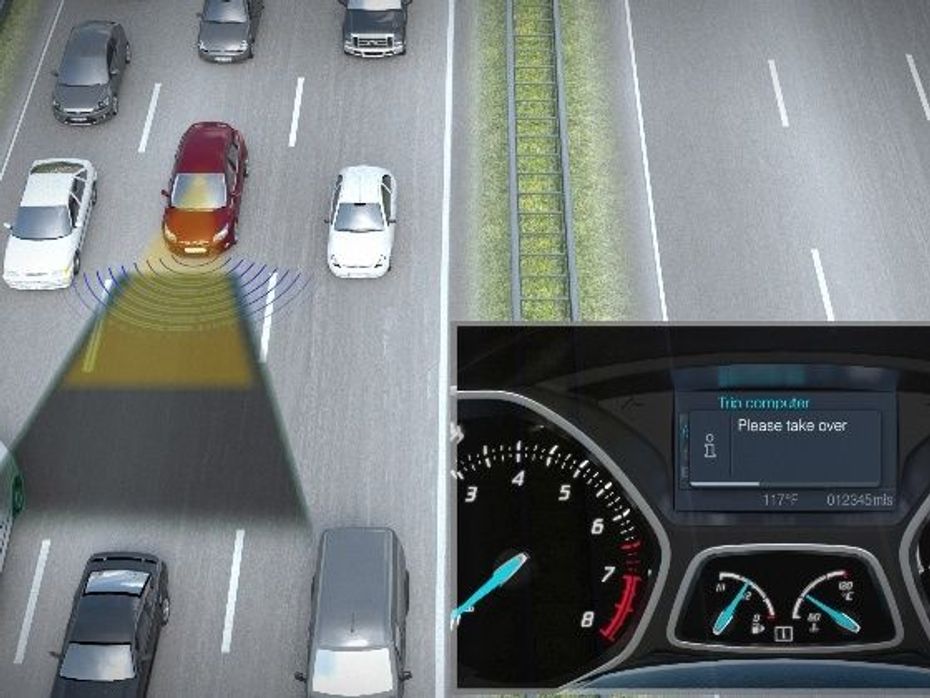
Ford India announces special offers on Ford Figo
- Apr 14, 2015
- Views : 13228


Ford is developing new driving assist technologies which it will introduce in its future models. These technologies are being developed as part of Ford’s ‘Blueprint for Mobility’ strategy, which aims to find solutions as cities and roads become more crowded.
“Developing these technologies is part of the first step in a journey towards a more connected future,” said Paul Mascarenas, Ford’s chief technical officer and vice president, Research and Innovation. “It’s an undertaking we believe will save time, conserve resources, lower emissions and improve safety.”
The first technology is called the TrafficJam Assist; it uses technology from features already available in many Ford cars sold in the international market including Active Park Assist, Adaptive Cruise Control, Lane Keeping Aid, and Ford’s Powershift transmission. The TrafficJam Assist automatically keeps pace with other vehicles and provides automated steering control to stay in lane, for which it uses on-board cameras and radars. This will let vehicles move smoothly, which could potentially reduce jam like situations and at the same time reduce driver stress. The technology could be introduced in Ford’s cars around 2017-2025.
Ford is also working on enhancing the role of the current Active Park Assist system found on many of its cars. The Active Park Assist’s role will evolve from assisting the driver in parallel parking without touching the steering wheel, to offer perpendicular parking in the same manner. It uses ultrasonic sensors to identify suitable parking spaces; the system will calculate the parking spaces based on width rather than length, and then steer the vehicle into them using Ford’s Electronic Power Assisted Steering system.

It is possible that the perpendicular parking technology will feature much earlier on road-going cars than the TrafficJam Assist. “The key is that we already have the technologies that we need to make Active Park Assist with Perpendicular Parking Functionality a reality for Ford customers,” said Thomas Lukaszewicz, supervisor, Research and Advanced Engineering, Ford of Europe. “The system benefits customers and other road users with its speed and accuracy. Straighter, neater parking means more space for all.”
Traffic gridlock is a reality in many countries around the world. In Sao Paulo, Brazil, traffic jams regularly exceed 160km and the average commute lasts between two and three hours a day. That hasn’t hampered people from buying cars though, it is estimated that new cars are being added to its road at a rate of 7.5 per cent annually. In China, the world’s longest traffic jam was registered at 11 days in 2010. It is estimated that the cost of congestion to the economy in England through lost time will rise to around $35 billion (Rs 2 lakh crore) annually by 2025.
Ford is not alone when it comes to developing technologies to tackle the problems that come with increasing traffic around the world. Last month Honda announced that it had developed the world’s first technology that could predict a traffic jam before it even starts (read about it here: Honda develops technology to prevent traffic jams).

Ford India announces special offers on Ford Figo

Refreshed Ford Figo launched in India

Ford launches Innovative Mobility Challenge Series

2014 Ford Figo gets equipped with Wi-Fi connectivity

Ford unveils Compact Sedan

Ford Figo sales cross 3 lakh mark

Ford's limited edition kit for the Figo

Buying a new car now more frequent

Ford Figo facelift launched at a price of Rs 3.85 lakhs

Top 7 India Car News Highlights Over The Past Week Featuring 2 New...
 Mahindra BE 6
Mahindra BE 6
 Royal Enfield Classic 350
Royal Enfield Classic 350
 Maruti Dzire
Maruti Dzire
 Yamaha MT 15 V2.0
Yamaha MT 15 V2.0
 Honda Amaze
Honda Amaze
India's largest automotive community
 Maruti Brezza
Rs. 8.34 Lakh
Maruti Brezza
Rs. 8.34 Lakh
 Maruti FRONX
Rs. 7.51 Lakh
Maruti FRONX
Rs. 7.51 Lakh
 Maruti Grand Vitara
Rs. 10.99 Lakh
Maruti Grand Vitara
Rs. 10.99 Lakh
 Tata Curvv
Rs. 9.99 Lakh
Tata Curvv
Rs. 9.99 Lakh
 Mahindra Thar
Rs. 11.34 Lakh
Mahindra Thar
Rs. 11.34 Lakh